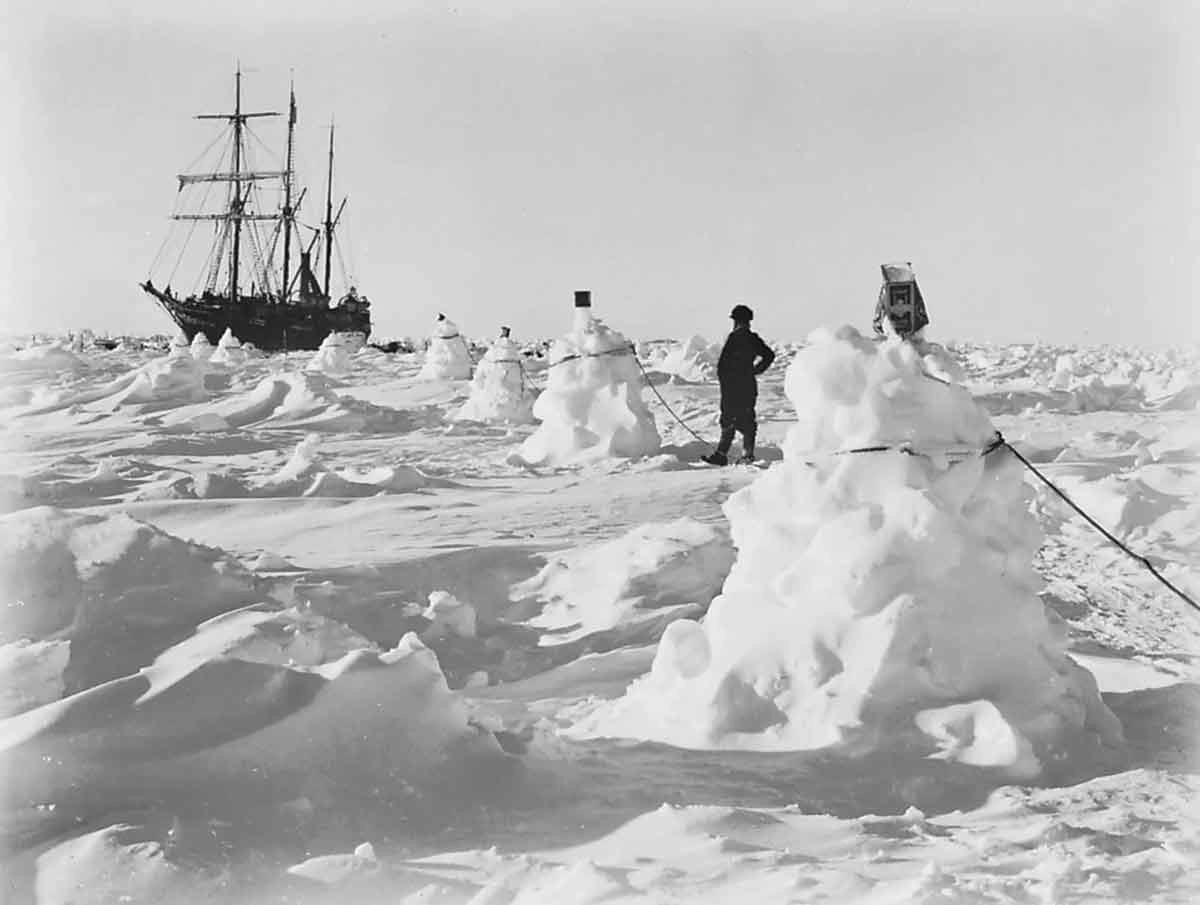Moxie: What Leaders Do
Oct 08, 2025Leadership isn’t about control; it’s about clarity. The best leaders paint a vivid picture of the future and help others see themselves in it.
(Ernest Shackleton and his crew stand under the bow of the Endurance, frozen in the Weddell Sea, 1915. Photo courtesy of Getty Images.)
ONE STORY
What is a leader?
At its most basic level, a leader is 'someone who takes people from here to there.'
Someone who sees a clear, compelling picture of the future, and they help others create it.
From George Washington to Eleanor Roosevelt to Mike Krzyzewski, great leaders share a simple but not simplistic skill:
They see it before others do, and then they help others see it too.
Take Ernest Shackleton.
In 1915, his ship, the Endurance, was trapped in Antarctic ice.

(The Endurance, locked in the Antarctic ice, 1914. Photographed by Underwood & Underwood for the Royal Geographical Society.)
For months, Shackleton and his 27 crew members lived on a frozen sea. No movement, no map, and eventually, no ship. When the Endurance finally sank beneath the ice, the mission became survival.
That's when Shackleton's leadership truly shined.
He refused to let his crew be consumed by their circumstances.
He painted a picture his men could hold onto:
"We will get home. Not if. Not maybe. We will."

(The Endurance's final sinking, Nov 1915.)
Every decision he made – rationing supplies, rotating responsibilities, organizing songs and games to keep spirits high – served that vision. He modeled calm when panic would’ve been easier. (Alfred Lansing's book Endurance is a great telling of this epic story, btw.)
Shackleton carried hope when others couldn’t.
And in the end, not one man died.
That’s leadership.
Not dominance. Not bravado.
But clarity, conviction, and care.
The Brain Science
Clarity calms the brain.
A compelling future activates it.
When the world feels uncertain, the amygdala, the brain’s threat center, lights up.
This activation floods the body with cortisol and, eventually, adrenaline, narrowing focus and preparing you for survival, not creativity.
The brain starts scanning for danger instead of direction.
That’s why vague leadership creates anxiety.
Unclear goals, mixed messages, or inconsistent standards trigger the same neural circuitry as threat. People get stuck protecting themselves instead of pursuing progress.
Clarity reverses that pattern.
When a leader defines where we’re going and why, the prefrontal cortex, the brain’s planning and decision-making hub, takes the wheel back from the amygdala. This shift restores access to problem-solving, empathy, and collaboration.
And when the picture of the future is compelling – emotionally rich, purposeful, and better than the current state of things – the brain releases dopamine.
And dopamine doesn’t just make you feel good; it directs your attention toward rewards and sustains motivation through obstacles.
In short:
Clarity reduces threat.
Vision increases drive.
Together, they rewire the brain from fear of failure to focus on possibility.
That’s why Shackleton’s men didn’t just endure. They endured with direction.
He didn’t simply manage fear; he reframed it.
He turned anxiety into action, and ultimately, into survival.
📜 TWO QUOTES
“Optimism is true moral courage.” – Ernest Shackleton
“The leader’s job is to see more than others see, to see farther than others see, and to see before others do.” – Leroy Eims
🚀 THREE TAKEAWAYS
1. You don't lack courage. You lack clarity.
Fear grows in the fog. When you get clear on both the next step and the ultimate destination, the path stops feeling impossible. Courage doesn’t appear out of nowhere, it follows clarity. Because once you can see, you can move.
2. Don't start with the current conditions. Start with the future you want.
Shackleton didn’t plan from panic; he planned from vision. He began with the end in mind and built backward from it. The future you want should define your next step, not your current conditions
3. Protect your internal reference point.
As the vision gets clearer, your circumstances get quieter. The more rooted you are in purpose and perspective, the less power external chaos has over you.
🔍 MOXIE REFLECTIONS
- What does “there” actually look like for you, in vivid, sensory detail? What would it feel like to arrive?
-
Where in your life are you reacting to the current conditions instead of designing the desired destination?
-
Who needs to see the picture you’re carrying, and how clearly have you shared it?
🛠️ TOOLS FOR GROWTH
🧩 PATTERN RECOGNITION: Ambiguity Aversion
When things are uncertain, the brain fills in the blanks with fear. Ambiguity activates the amygdala, causing anxiety, second-guessing, and over-control.
That’s why we cling to old routines and flawed plans: the brain prefers a direction over no direction.
The Fix: Clear goals and shared language. When leaders name the vision and define the next mile marker, it reduces the threat response and restores energy for creativity and connection. Clarity doesn’t eliminate uncertainty, but it gives it shape.
🧠 MENTAL SKILL OF THE WEEK: Vision Casting
Vision Casting is the skill of turning a feeling into a future.
Why it matters: The brain is predictive by nature. It needs something to move toward. A vivid future gives it purpose, structure, and momentum.
How to use it:
-
Write a one-paragraph description of where you’re going.
-
Use sensory language: what will it look, sound, and feel like when you arrive?
-
Share it with your team, partner, or peers.
-
Refine it until others can see it too.
When people can see what you see, they’ll start rowing with you, not because they have to, but because they want to.
🌱 ONE MORE THING
(The photograph published on the announcement of the death of Sir Ernest Shackleton in 1922)
Don’t start with the current conditions. Start with the vision.
Anyone can describe the ice around them: the problems, the pressure, the fear. True leaders describe the future we're building.
See the future you want.
Name it.
Then work backward until the next move becomes clear.

